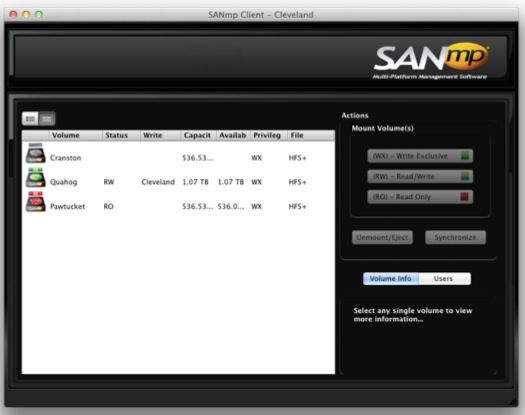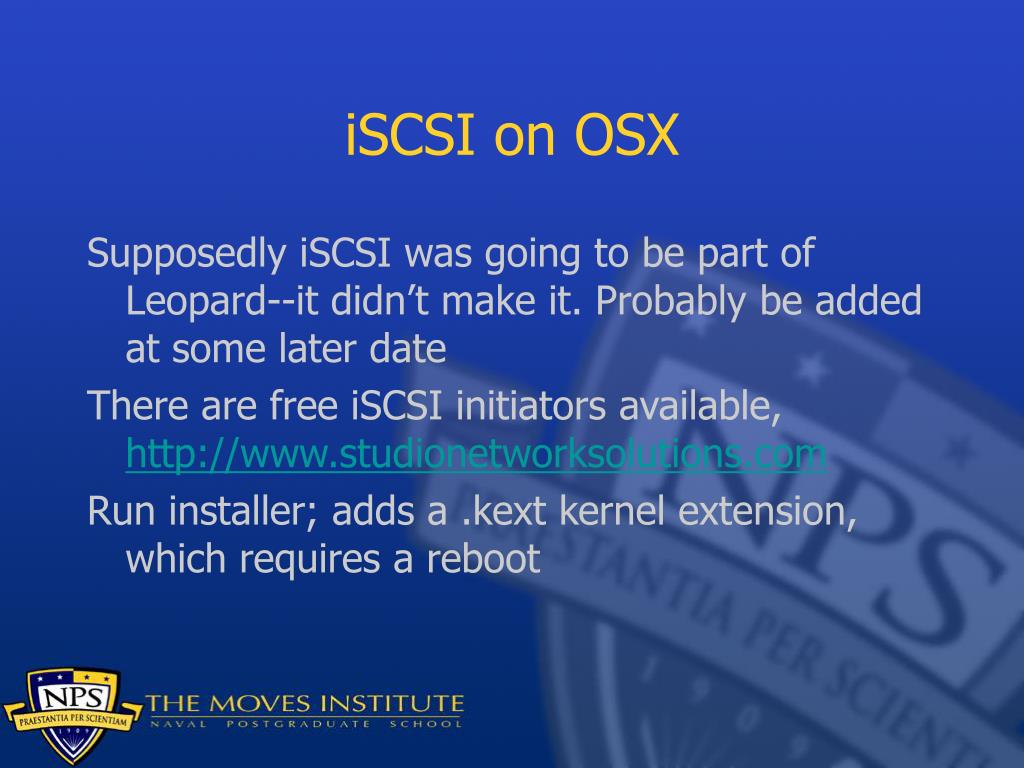
iSCSI has become extremely popular in recent years, and so more and more people enjoy the numerous advantages of the easy network sharing. The client software for this standard is even embedded in Windows 7, however still there is no default iSCSI Initiator for Mac. I would like to answer several questions about iSCSI which you were too embarrassed to ask. What is iSCSI Initiator? Why do you really need it? Where to get and how to use iSCSI Initiator for Mac? Let's start!
1. What is iSCSI Initiator and iSCSI Target?

iSCSI is a protocol that allows sharing data via LANs, WANs and Internet. I won't go deep into details and just say that it is something like SCSI commands used over IP network. This standard requires at least two computers – the first one plays a role of storage server and the second PC appears to be a client of the above mentioned server. For both operating systems – Windows and Mac – iSCSI Initiator represents a client computer, while iSCSI Target is a server.
2. Why do I need iSCSI Initiator for Mac or Windows?
As I have already mentioned, iSCSI server is a huge data storage that can be shared with any computer in the network. With iSCSI Initiator, Mac or Windows OS gets almost unlimited access to the remote server with lots of data. You can use remote images or disks, work with some resources together with other people and store much useful information on the server, economizing the resources of your computer. Indeed, forget about gigabytes of data on your Mac – iSCSI Initiator gives you a key to the various storage servers, the disks on which can be used just like the local ones. And they don't require any byte of your hard drive!
Turn your Windows, Mac or Linux computer into handy iSCSI storage area network. Share virtual and physical optical drives, virtual hard disks and USB devices with both DAEMON Tools or third-party iSCSI Initiators to create the most low-price home SAN ever. Windows, Mac, Linux ready. Download free iSCSI initiator for Mac OS X 2.20 KernSafe iSCSI Initiator X is completely free iSCSI initiator software for Apple Mac OS X. With the benefits of iSCSI technology, iSCSI initiator X can export an SAN device to local Mac OS X machine include: Mac Pro, iMac, Mac Server, Mac Mini and even MacBook Pro. KernSafe iSCSI Initiator X is completely free iSCSI initiator software for Apple Mac OS X. With the benefits of iSCSI technology, iSCSI initiator X can export an SAN device to local Mac OS X machine include: Mac Pro, iMac, Mac Server, Mac Mini and even MacBook Pro. Download free iSCSI initiator for Mac OS X 3.0. In an iSCSI SAN, an initiator is needed on each computer that requires access to the networked storage. An initiator is not included with the purchase of a Mac, so we created globalSAN to bring iSCSI to your Mac. To get the globalSAN initiator, select an option on the right or use an SNS storage system.
If it helps anyone, you can get a FREE open source ISCSI initiator for MAC at Github here: iSCSI Initiator 1.0.0-beta2 Confirmed working for me OS X El Capitan 10.11.3.
3. Is there any default iSCSI Initiator for Mac?
Although with iSCSI Initiator Mac OS gets a great advantage, the developers haven't embedded it into the operating system. So to evaluate the benefits of iSCSI, Mac OS X machine needs third-party software. I would like to recommend DAEMON Tools – a program, which allows working with iSCSI Targets on your Mac. This easy-to-use tool also gives you an opportunity to mount different types of images and to organize the collection of your virtual disks. iSCSI Initiator is a separate feature of the program that can be purchased additionally.
4. What is iSCSI Initiator in DAEMON Tools and how to use it?
DAEMON Tools is a compact tool for image mounting. Also, it may include iSCSI Initiator – additional feature that allows you to work with targets. With iSCSI Initiator Mac machine is able to mount not only local images, but also the remote virtual disks. To launch and use iSCSI Initiator for Mac, perform the following steps:
Windows 10 Iscsi Target
- Download and install DAEMON Tools for Mac from the program's official site.
- On the iSCSI Targets tab, click Add option in the tab's contextual menu or Add icon in the toolbar:
- Enter the server's IP address or name, choose the Port. Note that the default port number is 3260.
- When the server is ready to use, click the triangle near it to expand the list of available targets:
- Select the target and choose Connect option in its contextual menu, or click Connect icon in the toolbar, or double-click on the target:
- You have successfully connected to the target! It appears in the program just like a local image, and you can use it as any other virtual disc:
So, to use the advantages of iSCSI, Mac machine needs DAEMON Tools. I advise you to try the functions of the program for free during the trial period to decide whether it works for you. By the way, the application allows you not only to create iSCSI Initiator for Mac, but also to work with numerous types of images, for example, with ISO virtual files and APE images.
Rather than not writing about it at all just some quick notes:

Globalsan Big Sur
- The Droboshare Dashboard software includes the Xtend SAN iSCSI Initiator.
- If you want to use the initiator with non-Drobo iSCSI targets you will have to use the command line interface to configure the target and connect to it. The tool is called xtendsancli. This command line interface (cli) is written in Java and using RMI to talk to some backend which could open up some DIY GUI options.
- The only limitation of the included Xtend initiator (besides the missing GUI) is that it checks if the target name begins with “iqn.2005-06.com.drobo:”. If you can configure the server side there is no difficulty or downside in just using that name and making your iSCSI target look like a Drobo.
That way I was able to make the Drobo iSCSI initiator talk to a Ubuntu 13.10 ‘iscsitarget’ (thats the name of the package) on OS X Mavericks.